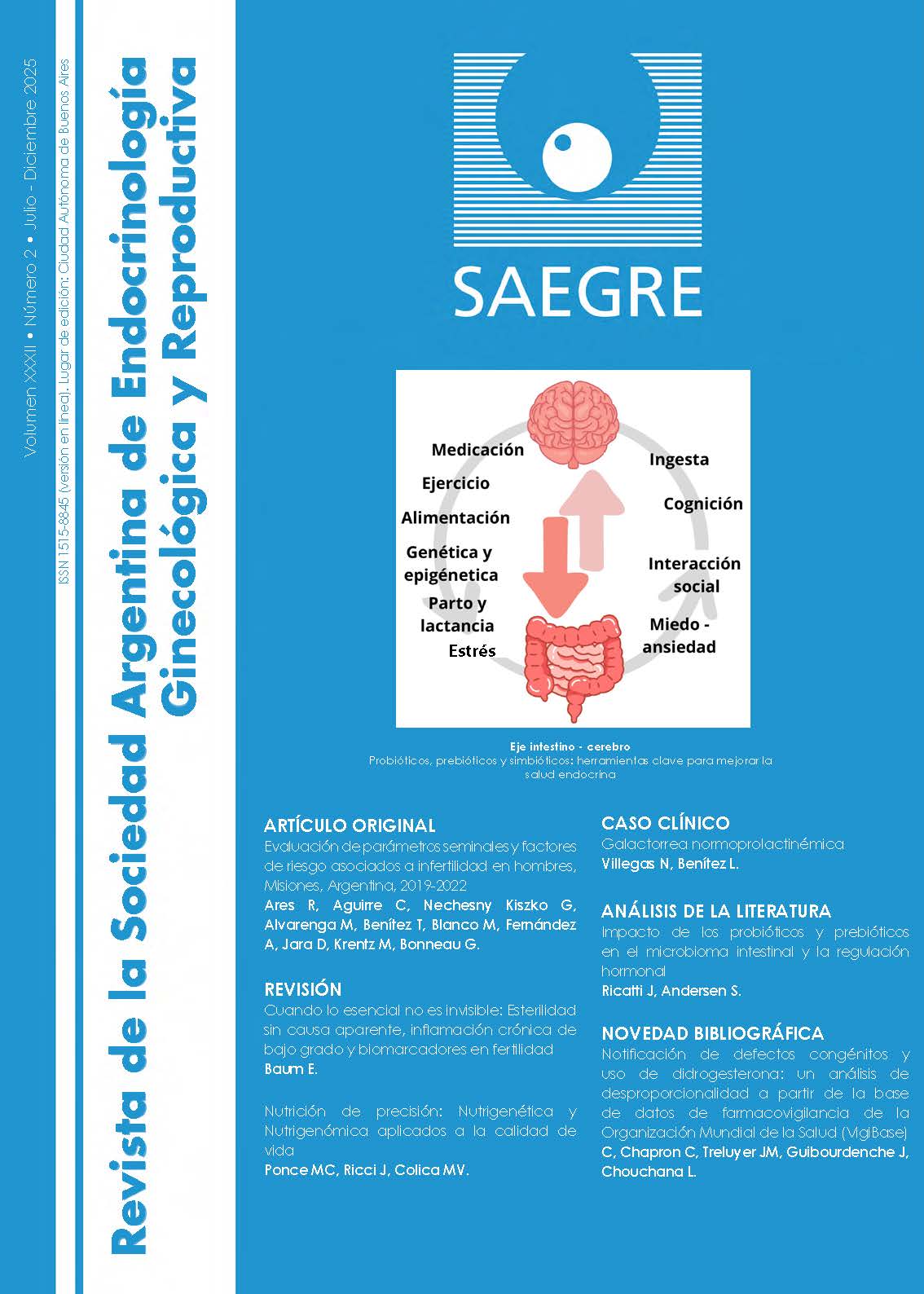Abstract
The gut microbiome plays a crucial role in human health by influencing various physiological functions through complex interactions with the endocrine system. These interactions involve the production of metabolites, signaling molecules, and direct communication with endocrine cells, which modulate hormone secretion and activity. As a result, the microbiome can exert neuroendocrine effects and contribute to metabolic regulation, adiposity, and appetite control. Additionally, the gut microbiome influences reproductive health by altering levels of sex hormones such as estrogen and testosterone, potentially contributing to conditions like polycystic ovary syndrome (PCOS) and hypogonadism. Given these roles, targeting the gut microbiome offers researchers and clinicians novel opportunities to improve overall health and well-being. Probiotics, such as Lactobacillus and Bifidobacterium, are live beneficial microbes that help maintain gut health by balancing the microbiota. Prebiotics, nondigestible fibers, nourish these beneficial bacteria, promoting their growth and activity. When combined, probiotics and prebiotics form synbiotics, which work synergistically to enhance the gut microbiota balance and improve metabolic, immune, and hormonal health. This integrated approach shows promising potential for managing conditions related to hormonal imbalances, though further research is needed to fully understand their specific mechanisms and therapeutic potential.
References
Mayer EA, Knight R, Mazmanian SK, Cryan JF, Tillisch K. Gut microbes and the brain: paradigm shift in neuroscience. J Neurosci. 2014;34(46):15490–6. doi:10.1523/JNEUROSCI.3299-14.2014.
Margulis L. Symbiosis as a source of evolutionary innovation: speciation and morphogenesis. In: Margulis L, Fester R, editors. Symbiogenesis and symbionticism. Cambridge (USA): MIT Press; 1991. p. 1–14.
Schnorr SL, Sankaranarayanan K, Lewis CM Jr, Warinner C. Insights into human evolution from ancient and contemporary microbiome studies. Curr Opin Genet Dev. 2016;41:14–26. doi:10.1016/j.gde.2016.07.003.
Franzosa EA, Huang K, Meadow JF, Gevers D, Lemon KP, Bohannan BJM, Huttenhower C. Identifying personal microbiomes using metagenomic codes. Proc Natl Acad Sci U S A. 2015;112(22):E2930–8. doi:10.1073/pnas.1423854112.
Pedersen RM, Grønnemose RB, Stærk K, Asferg CA, Andersen TB, Kolmos HJ, et al. A method for quantification of epithelium colonization capacity by pathogenic bacteria. Front Cell Infect Microbiol. 2018;8:16. doi:10.3389/fcimb.2018.00016.
Gupta VK, Paul S, Dutta C. Geography, ethnicity or subsistence-specific variations in human microbiome composition
and diversity. Front Microbiol. 2017;8:1162. doi:10.3389/fmicb.2017.01162.
Zarrinpar A, Chaix A, Yooseph S, Panda S. Diet and feeding pattern affect the diurnal dynamics of the gut microbiome. Cell Metab. 2014;20(6):1006–17. doi:10.1016/j.cmet.2014.11.008.
Baker JM, Al-Nakkash L, Herbst-Kralovetz MM. Estrogen-gut microbiome axis: physiological and clinical implications. Maturitas. 2017;103:45–53. doi:10.1016/j.maturitas.2017.06.025.
Colldén H, Landin A, Wallenius V, Elebring E, Fändriks L, Nilsson ME, et al. The gut microbiota is a major regulator of androgen metabolism in intestinal contents. Am J Physiol Endocrinol Metab. 2019;317(6):E1182–92. doi:10.1152/ajpendo.00338.2019.
Zawodsky L. Eubiose - Dysbiose [Eubiosis - dysbiosis]. Wien Med Wochenschr. 1966;116(49):1089–92.
Iebba V, Totino V, Gagliardi A, Santangelo F, Cacciotti F, Trancassini M, Mancini C, et al. Eubiosis and dysbiosis: the two sides of the microbiota. New Microbiol. 2016 Jan;39(1):1-12. PMID: 26922981.
Elkafas H, Walls M, Al-Hendy A, Ismail N. Gut and genital tract microbiomes: dysbiosis and link to gynecological disorders. Front Cell Infect Microbiol. 2022;12:1059825. doi:10.3389/fcimb.2022.1059825.
Ukrainets RV, Korneva YS, Dorosevich AE. Abnormal gut microbiota-induced hypoestrogenemia as a possible risk factor for malignancy in endometrioid heterotopia. Arkh Patol. 2020;82(2):57–61. Russian. doi:10.17116/patol20208202157.
Colldén H, Landin A, Wallenius V, Elebring E, Fändriks L, Nilsson ME, et al. The gut microbiota is a major regulator of androgen metabolism in intestinal contents. Am J Physiol Endocrinol Metab. 2019;317(6):E1182–92. doi:10.1152/ajpendo.00338.2019.
Zou S, Yang X, Li N, Wang H, Gui J, Li J. Association of probiotic ingestion with serum sex steroid hormones among pre- and postmenopausal women from the NHANES, 2013–2016. PLoS One. 2023;18(11):e0294436. doi:10.1371/journal.pone.0294436.
FAO/WHO. Health and nutritional properties of probiotics in food including powder milk with live lactic acid bacteria: Report of a joint FAO/WHO expert consultation. Córdoba (Argentina): FAO/WHO; 2001 [Disponible en: https://openknowledge.fao.org/server/api/core/bitstreams/382476b3-4d54-4175-803f-2f26f3526256/content]
Chilton SN, Burton JP, Reid G. Inclusion of fermented foods in food guides around the world. Nutrients. 2015;7(1):390–404. doi:10.3390/nu7010390.
Esta obra está bajo licencia internacional
Los documentos publicados en esta revista están bajo la licencia Creative Commons Atribución NoComercial-4.0 Internacional

